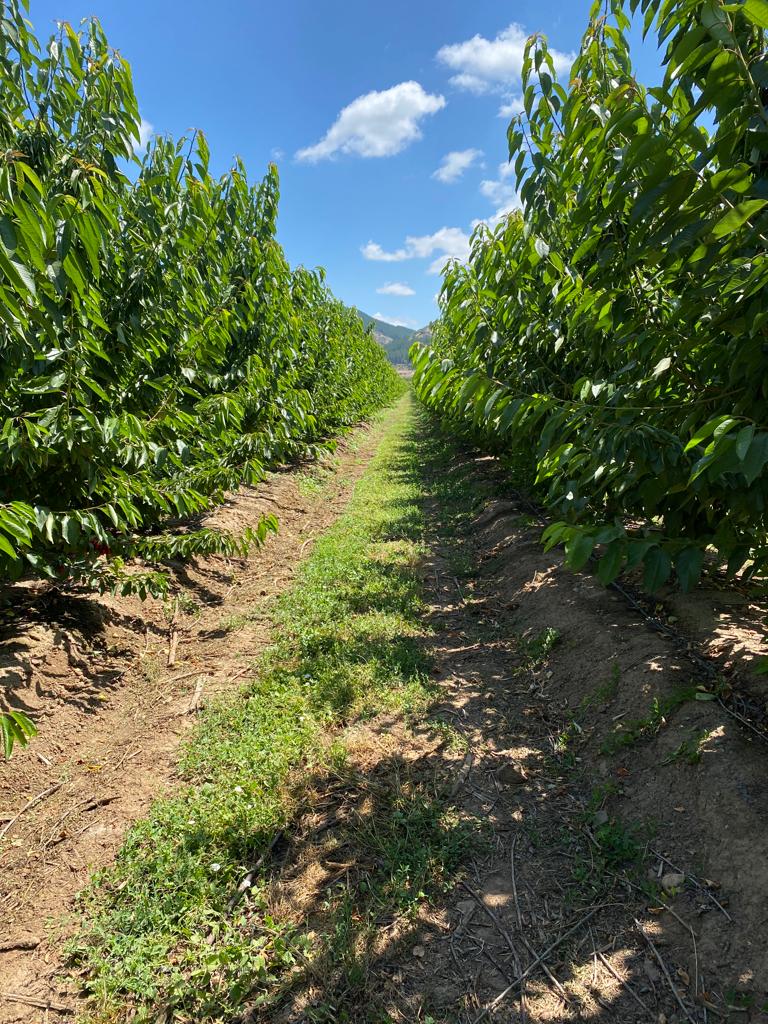One of the main challenges facing the cherry industry in post-harvest is dehydration, a problem that affects the quality and condition of the fruit, decreasing its commercial value and acceptance by consumers. This makes it necessary to find effective solutions to prevent or minimize water loss from cherries during post-harvest.
The dehydration experienced by freshly harvested cherries in the orchard inside bins, while awaiting their transfer to a collection center, can reach very high levels. This is, in fact, the post-harvest stage in which the cherry is exposed to the most extreme conditions of the entire process between harvest and the arrival of the fruit at its export destination. High temperatures, low relative humidity and direct solar radiation are the factors that determine this scenario. Due to the above, covering the bins at this stage is an essential task to protect the cherry. However, practices vary depending on the field, and can be observed from mesh covers. Raschel even sponges with water on the bins.
In this context, the R&D team at Johnson Industrial Projects carried out a test with the aim of evaluating the dehydration of freshly harvested cherries during their storage inside bins in the orchard, using different materials as cover.
In this study, three different treatments were compared, consisting of different cover materials for the bins, in order to determine which of these provided the optimal conditions to minimize the dehydration of the cherries while they were waiting in the orchard between the rows, prior to their transfer to the collection center. The materials evaluated were: (1) reflective material tent, (2) sponge soaked in water and (3) both elements together, sponge soaked in water and reflective tent over it.
In order to meet the objective, bins filled with freshly harvested cherries were exposed to the environmental conditions existing in an orchard located in the O'Higgins region for a period of two hours, covering each bin with the different materials mentioned above. During this period, the temperature of the cherry pulp inside the bins, the temperature and relative humidity inside each bin were monitored, and the initial and final weight of fruit samples stored inside each bin were determined. The weight loss of the fruit was expressed as a percentage per unit of time (%/h).
The results showed a positive effect of all materials on the decrease of the vapor pressure deficit (VPD) inside the bins and evidenced a lower weight loss of the fruit in bins covered with sponge soaked in water (Figure 6), this being the best evaluated material in relation to its effect on fruit dehydration.

Figure 5. Temperature and relative humidity of the environment in the field at the time of cherry harvest, and inside the bins with different covers (reflective material tent, sponge soaked in water and both materials together).
Figure 6. Weight loss and temperature of freshly harvested cherry pulp stored inside bins covered with different materials (reflective tent, sponge soaked in water and both materials together, tent on sponge), exposed to field conditions.
The results of this test conclude that covering bins at harvest time is a management that modifies the environmental conditions inside them, providing a less dehydrating environment for the fruit stored in them. In this test, both the reflective material cover and the sponge soaked in water decreased the air temperature inside the bin and increased the relative humidity with respect to the outside; however, it was the wet sponge that generated a lower vapor pressure deficit and, therefore, a less dehydrating environment. By adding a reflective material cover to the wet sponge, the effect is equivalent to that observed with the wet sponge alone. Along with the effect on dehydration, the sponge soaked in water managed to maintain the temperature of the cherry pulp at lower levels than the reflective material cover.
Based on the details, covering the bins with a sponge soaked in water, with or without a reflective material cover over it, is a recommended management that will generate less weight loss of the cherries stored inside during the exposure of the fruit to field conditions.








